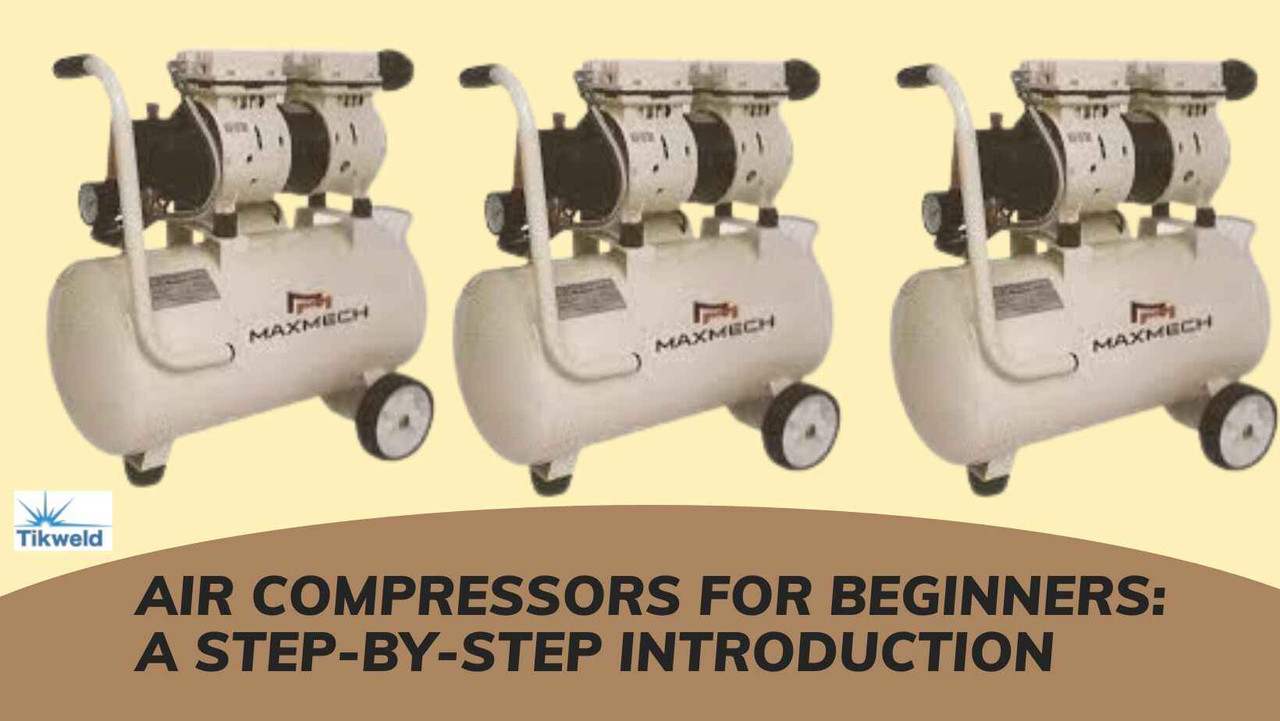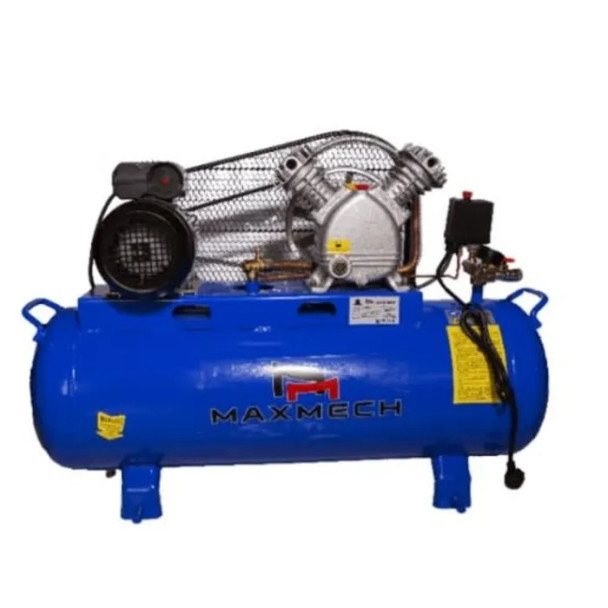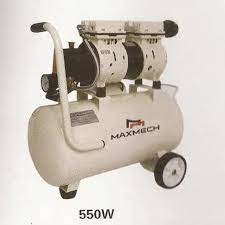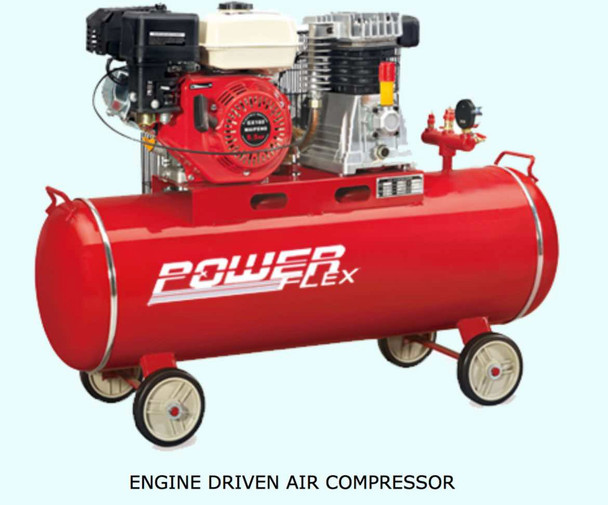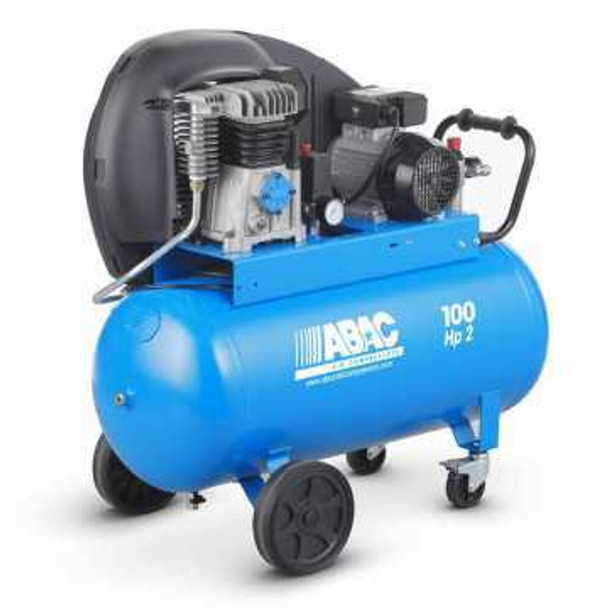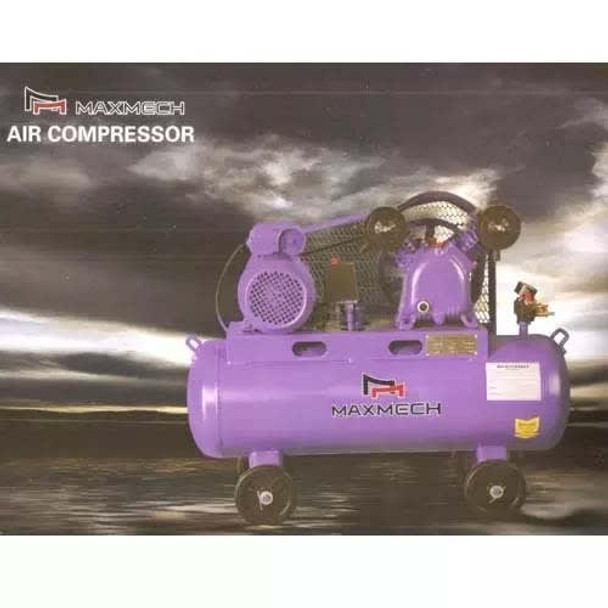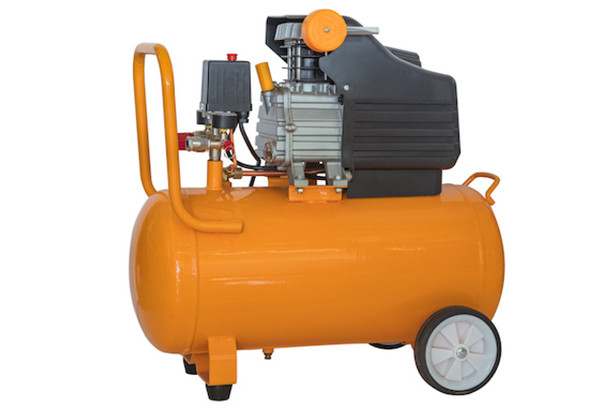Air Compressors for Beginners: A Step-by-Step Introduction
Introduction
Air Compressors are indispensable tools in a wide array of industries and applications. They serve as the mechanical workhorses behind a plethora of processes, ranging from construction and manufacturing to automotive maintenance and healthcare. Understanding the fundamentals of air compressors is not only essential for professionals working in these fields, but it's also incredibly valuable for enthusiasts and DIYers.
Air compressors play a pivotal role in converting power into potential energy stored in compressed air. This compressed air, when released, can perform various tasks like powering pneumatic tools, controlling automated systems, and even cleaning surfaces. This versatility makes air compressors a cornerstone of modern industry.
In construction, air compressors drive pneumatic nail guns, jackhammers, and paint sprayers, significantly expediting projects and enhancing precision. In automotive repair, they enable the operation of impact wrenches and air ratchets, making the disassembly and reassembly of components a breeze. In manufacturing, air compressors are integral to the operation of assembly lines, ensuring smooth and efficient production.
Furthermore, air compressors find applications in the medical field, where they power critical equipment like ventilators and dental tools. They're also prevalent in the food and beverage industry, used for packaging, conveying, and even refrigeration processes.
The purpose of this guide is to provide beginners with a comprehensive introduction to air compressors. Whether you're a budding professional, a DIY enthusiast, or simply someone intrigued by the inner workings of these machines, this guide aims to demystify the world of air compressors.
Read more...A Buyer’s Guide to Air Compressors: What You Need to Know Before Purchasing in Nigeria
Maxmech Air Compressor 300L available for pick-up
Key Takeaway
- Air compressors convert power into potential energy stored in pressurized air and are essential tools across various industries, from construction and manufacturing to home workshops.
- There are different types of air compressors—including reciprocating (piston), rotary screw, and centrifugal—each suited for specific tasks and usage levels.
- Understanding key specifications like PSI (pounds per square inch), CFM (cubic feet per minute), tank size, and duty cycle helps you choose the right compressor for your needs.
- Oil-free vs. oil-lubricated models offer different benefits: oil-free units are low-maintenance, while oil-lubricated versions are more durable for heavy-duty use.
Read more...What is an Oil free Air compressor?
Types of Air Compressor
Understanding that not all air compressors are created equal. The guide will delve into various types, such as reciprocating (piston), rotary screw, centrifugal compressors, vane and diaphragm. Each type has its own set of benefits and drawbacks, so it's important to choose the one that best meets your needs. Piston compressors are the most common type of air compressor. The types of air compressors will discussed below
Reciprocating (piston) Air Compressor:
A reciprocating or piston compressor is a positive-displacement compressor that uses a crankshaft-driven piston and cylinder to deliver gases at high pressure. These elements are powered by an electric or combustion engine. The air is moved into the cylinder and then compressed by the pistons. The compression can have one or more stages until the right operational pressure is reached. When the air is compressed, it moves through the cooler into the air tank.
The reciprocating or piston compressor operates in two stages. In a single stage compressor, the air is compressed once. A single-stage reciprocating piston compressor works by drawing the air into the cylinder where it is compressed in a single-piston stroke of approximately 120 PSI and then sent to a storage tank. A two-stage compressor includes an additional step where the air is compressed by a second, smaller piston to a pressure of up to 175 PSI. During the first stage of compression, air moves into the cylinder via a suction valve, triggered by the movement of the piston. This creates a vacuum. The piston then reverses its motion, fulfilling the “reciprocating” part of the name, and begins compressing the air in the process. Its applications include railway and road vehicle air brake systems, oil refineries, gas pipelines, oil and gas production drilling and well services, offshore platforms chemical plants, natural gas processing plants, air conditioning, and refrigeration plants. The reciprocating or piston compressor comes with different benefits such as:
- Ability to have high pressure and high power.
- Can be located close to point‐of‐use avoiding lengthy piping runs and pressure drops.
- Durable, efficient and affordable.
- Significant product life.
- Relatively Low Maintenance Cost etc.
Read more...The Most Affordable Air Compressors in Nigeria for Industrial Applications
Buy your MAXMECH 18L Air Compressor
Rotary Screw Air Compressor
A rotary screw compressor is a type of air compressor that uses two rotating screws (also known as rotors) to produce compressed air. Rotary screw air compressors are clean, quiet and more efficient than other compressor types. They are also supremely reliable, even when used continuously.
How the rotary screw air compressors work
When it comes to contemporary industrial machines, the rotary screw compressor is one of the commonly used machines. The rotary screw compressor is well-known for their reliability and versatility. It`s suited to an array of industry tasks, without which businesses around the globe would run into operational challenges and efficiency problems.
Operating Principles of rotary screw air compressors
As the name suggests, rotary screw compressors use rotary movements to compress the air. Within the compressor, there is a set of male and female rotors. They will be designed differently so that, when turned in unison, air will become trapped between them. The male rotor has convex lobes and the female rotor has concave cavities; thus, they can interconnect without touching to achieve compression. Unlike piston compressors which use the same principle of compression, the screw element is not equipped with valves. As such, it can work at a high shaft speed
Step by Step Screw Operation
- An opening valve sucks gas into the compressor chamber. Located in the chamber are the two screw rotors; when the machine is on, they will rotate at high speeds.
- As the impellers rotate, they trap and isolate air in the cavities between the rotors, thus moving the air down the chamber.
- The chamber decreases in size and is moved away from the opening valve. As the volume decreases, the pressure increases.
- Pressurisation builds and thus the air is condensed.
- Air pressure will trigger the compressor’s discharge valve to open, allowing the pressurised air to enter a receiver or other holding tank.
- Air is compressed and can be transferred to downstream equipment such as dryers and oil/water separators for drying and contamination removal.
The rotary screw air compressors have a lot of benefits which will be discussed below;
- Low noise: Quiet operation is down to the small size of the units and the lack of moving parts, making them suitable for point of use installations.
- Continuous operation: Capable of continuous airflow and pressurisation, they don’t need to be shut on and off and have no duty cycle. Meaning they operate constantly with little to no downtime.
- Easy to maintain: With very little moving and contacting parts, wear and tear is minimised reducing the cost of maintenance.
- Energy-efficient: Having stood the test of time, these durable machines produce less heat and conserve more energy than other models. These design features mean that they offer zero loss of capacity over time, keeping the lifetime cost of the compressor low.
Centrifugal compressors
Centrifugal compressor is one of the types of compressors that elevate gas pressure by adding kinetic energy/velocity to the gas as it flows through an impeller. The Kinetic energy increases potential energy/static pressure by slowing the flow through a diffuser. The pressure rise in the impeller (in most cases) is equal to the rise in the diffuser. The Centrifugal compressors are applied to turbochargers, industrial compressors and turbo shaft gas turbine engines because of their high pressure ratio, relatively wide operating range and cost benefits.
Vane air compressor
The vane compressor, also known as the rotary vane air compressor, uses centrifugal motion to generate compressed air instead of using the reciprocating motion of a piston pump. Vane compressors are used in a wide variety of applications because of the many advantages they offer, such as:
- Can Handle Tough Gases. The robust design of vane compressors makes them capable of handling sour, acidic, and wet gases.
- Low Maintenance.
- Easy to Rebuild.
- Low Operation Cost
- Long Life Span.
Diaphragm Air Compressor
A diaphragm compressor is a variant of the classic reciprocating compressor with backup and piston rings and rod seal. The compression of gas occurs by means of a flexible membrane, instead of an intake element. The back and forth moving membrane is driven by a rod and a crankshaft mechanism. The diaphragm type air compressor is widely used in many occasions. It's especially popular for compressing toxic gases and rare gases such as hydrogen, nitrogen,etc. For this reason, the diaphragm gas compressor is also known as a hydrogen compressor, or h2 compressor, etc. Their unique design and capabilities make them an ideal choice for compressing toxic, corrosive, or flammable gases. The advantages of diaphragm compressors include non-contaminating, low maintenance, energy-efficient, and high reliability, making them a cost-effective solution for various industrial applications.
In a piston compressor, the piston is the primary gas displacing element. However, in diaphragm compressors compression is achieved by the flexing of a thin metal, rubber or fabricated disk which is caused by the hydraulic system and operated by the motion of a reciprocating piston in a cylinder under the diaphragm.
Buy Online... Powerflex Air compressor Gasoline driven 5.5HP 100 liters Tank
Importance of air compressor
Air compressor is extremely important in our day-to-day lives. They are used in all aspects of society, and the importance can not be overemphasised.. Compressed air is a crucial part of many industrial and commercial processes, including cleaning, drying, and material handling. Due to the extreme nature of compressed air,
- it can be used in many ways, and they are incredibly important in many industries. They are used in construction to clean and dry masonry, concrete and other materials.
- They are also used to blow out and clean HVAC ducts. Air compressors are also used to power pneumatic tools. They are used for drying, curing, and cleaning.
- They are used for painting, and they are used in a wide variety of other applications as well.
- Air compressors operate a wide range of air tools on production lines: They drive cutting and welding equipment. They blow mould gas tanks and plastic bottles and eject pieces from production moulds. They drive screws and turn nuts and adjust rollers and feed machinery.
- Air compressors use power typically from either gas or electric to form highly pressurised air that can be used for a variety of industrial purposes, including sanding, detail cleaning, nail gun operation and more. Many businesses prefer compressed air due to its ease of use, easy storage and easy transportability.
Components of Air compressor
Pressure switch
A pressure switch is a form of switch that operates an electrical contact when a certain set fluid pressure has been reached on its input. The switch may be designed to make contact either on pressure rise or on pressure fall.
Valve
A valve is a device or natural object that regulates, directs or controls the flow of a fluid by opening, closing, or partially obstructing various passageways. Valves are technically fittings, but are usually discussed as a separate category.
Connecting rod
A connecting rod, also called a 'con rod', is the part of a piston engine which connects the piston to the crankshaft. Together with the crank, the connecting rod converts the reciprocating motion of the piston into the rotation of the crankshaft.
Piston
A piston is a component of reciprocating engines, reciprocating pumps, gas compressors, hydraulic cylinders and pneumatic cylinders, among other similar mechanisms. It is the moving component that is contained by a cylinder and is made gas-tight by piston rings.
Check Valves
A check valve only permits flow in one direction, and blocks the flow in the opposite direction. Coalescing Filters
Pressure Relief Valve
A relief valve or pressure relief valve is a type of safety valve used to control or limit the pressure in a system; excessive pressure might otherwise build up and create a process upset, instrument or equipment failure, explosion, or fire.
Rotors
Rotors can be found in rotary screw air compressors, usually of two helical rotors that interlock. They compress the air from the inlet valve, delivering it at .
Buy Online... Abac Compressor A29B/100 CM2, 100 liters
Comparison of Major Air Compressor Types
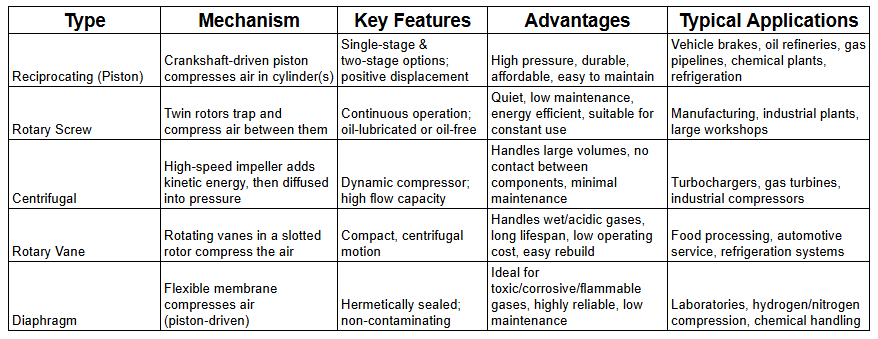
Seven Major selection criteria to consider when choosing an Air Compressor
If you need an air compressor for a DIY job or for your industrial use, you need to understand all the options out there. There are a lot of air compressors with different features, specifications etc. Understanding these considerations is vital to finding the right compressor that will serve your needs. These are seven major considerations you must take into account to find the right air compressor for your industrial or personal use.
Tool demands
The first thing you need to look into in finding the right air compressor is what the pounds per square inch (PSI) demands of your tools are. Any tool running with an air compressor has a PSI specification. If you don't choose an air compressor that accommodates that PSI, you won't be able to power your tool with your air compressor. The more powerful an air compressor powered tool needs to be, the higher the PSI of the air compressor you use needs to be.
Power source
Air compressors can run on different power sources. Air compressors frequently run on electric power. However, gas-powered air compressor models are also available. The gas-powered models that are available are typically industrial grade and slightly more heavy-duty. Gas-powered models also tend to be portable so that they can be brought to work sites where no electricity is available.
Cubic Feet per Minute
CFM is a measurement detailing the volumetric flow of an air compressor. The most important thing to know about CFM is that CFM varies according to the PSI of an air compressor. An air compressor will have a different CFM value for any given PSI. If you compare two air compressor models, you need to compare the CFM between them at the same PSI value for the CFM value to have meaning.
Portability Needs
Air compressors come in two different design options. They can be either piston air compressors or portable air compressors. While piston air compressors are stationary, portable air compressors are moved about from job site to job site. A piston air compressor is connected to a tank that cannot be moved. A portable air compressor is ideal for powering pneumatic tools at various construction sites. If you need a piston air compressor that is stationary, you should know that the two options are single-stage and dual-stage air compressors. Single-stage air compressors offer higher cubic feet per minute (CFM) capabilities than dual-stage air compressors.
Buy Online... Maxmech Air Compressor 200L
Horsepower
These days, air compressors have different horsepower ratings in addition to PSI and CFM ratings. Horsepower is, of course, a reflection of the amount of power a particular unit offers. While lower horsepower ratings may be acceptable for smaller-scale products, a high horsepower air compressor is generally important when used in industrial settings.
Available features
You choose from various feature options when purchasing an air compressor. You choose if you want an air compressor that is belt-driven or direct-drive. You choose whether you want an oil-free pump or not. Oil-free pumps don't cost as much to maintain as pumps that rely on oil do.
Tank Size
Any air compressor that is tank mounted will come along with a tank of a particular size. The size of the tank you need depends on what kind of work you do and what kind of tools you connect. You should be aware that tank sizes are typically measured in gallons. If you only need to use pneumatic tools for short lengths of time, a smaller tank is acceptable. For large jobs lasting all day or longer, you need a bigger tank.
Ten maintenance tips for air compressor users
- Keep air compressor intercooler`s clean
- Keep air compressor after-cooler clean
- Ensure air compressor oil cooler is working properly
- Test compressor oil
- Change compressor inlet air filter and monitor pressure
- Check for clogged traps or stuck open valves
- Test compressor air drains and drop
- Make sure there is no water in the system
- Clean condensing coils in your refrigerated dryer
- Test desiccant dryer and dew point
Buy Online... Maxmech Air Compressor WP-30F
Frequently asked question on air compressor
1. What are the 2 principles of an air compressor?
What are the two basic principles of compression? There are two generic principles for the compression of air (or gas): Positive displacement compression and dynamic compression.
2. What is the difference between an AC compressor and air compressor?
An Air Conditioning compressor works on moving a working compound (refrigerant) through a closed, recirculating system to move heat from one location to another. An Air Compressor is part of an open system, taking outside air and pressurising it to use that stored pressure in working conditions.
3. How do I know what size air compressor I need?
To determine the correct size of the air compressor for your needs, check the highest value CFM and PSI of your tools. Multiply the CFM by about 1.5 to get the best margin CFM required for better and safe use. Once you get the value, find an air compressor that meets the requirement
4. What is the major application of compressors?
Compressors are used throughout industry to provide shop or instrument air; to power air tools, paint sprayers, and abrasive blast equipment; to phase shift refrigerants for air conditioning and refrigeration; to propel gas through pipelines; etc.
Related Articles
The Best Air Compressors for Welders in Nigeria 2025
Air Compressor Safety Tips for Welders and Fabricators
How to Install and Use Your Air Compressor for Optimal Performance
Conclusion
Air compressors are versatile tools that power a wide range of applications—from inflating tires and powering pneumatic tools to driving industrial processes. Understanding the different types, how they work, and where they're used is essential for choosing the right compressor for your needs.
Whether you're a DIY enthusiast, a technician, or an industrial operator, mastering the basics of air compressors opens the door to efficiency, productivity, and safety in your operations.
Ready to take the next step? Explore a wide range of high-quality air compressors and accessories tailored to your specific needs. Visit Tikweld Welding Supplies today and gear up with the right tools for the job!

